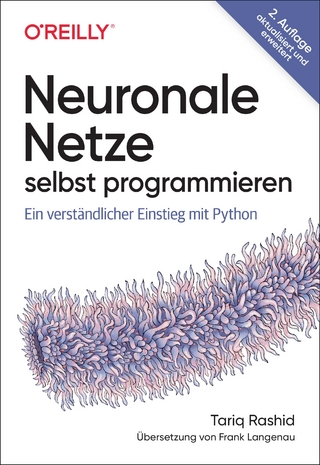
A Course in Categorical Data Analysis
Chapman & Hall/CRC (Verlag)
978-1-58488-180-3 (ISBN)
Categorical data-comprising counts of individuals, objects, or entities in different categories-emerge frequently from many areas of study, including medicine, sociology, geology, and education. They provide important statistical information that can lead to real-life conclusions and the discovery of fresh knowledge. Therefore, the ability to manipulate, understand, and interpret categorical data becomes of interest-if not essential-to professionals and students in a broad range of disciplines.
Although t-tests, linear regression, and analysis of variance are useful, valid methods for analysis of measurement data, categorical data requires a different methodology and techniques typically not encountered in introductory statistics courses. Developed from long experience in teaching categorical analysis to a multidisciplinary mix of undergraduate and graduate students, A Course in Categorical Data Analysis presents the easiest, most straightforward ways of extracting real-life conclusions from contingency tables. The author uses a Fisherian approach to categorical data analysis and incorporates numerous examples and real data sets. Although he offers S-PLUS routines through the Internet, readers do not need full knowledge of a statistical software package.
In this unique text, the author chooses methods and an approach that nurtures intuitive thinking. He trains his readers to focus not on finding a model that fits the data, but on using different models that may lead to meaningful conclusions. The book offers some simple, innovative techniques not highighted in other texts that help make the book accessible to a broad, interdisciplinary audience. A Course in Categorical Data Analysis enables readers to quickly use its offering of tools for drawing scientific, medical, or real-life conclusions from categorical data sets.
Leonard, Thomas
Preface -- Special Software -- 1 Sampling Distributions -- 1.1 Experimental design for a population proportion -- 1.2 Further properties of the binomial distribution -- 1.3 Statistical procedures for the binomial distribution -- 1.4 The Poisson distribution -- 1.5 Statistical procedures for the Poisson distribution -- 1.6 The multinomial distribution -- 1.7 Sir Ronald Fisher’s conditioning result -- 1.8 More general sampling models -- 1.9 Generalising the binomial distribution -- 1.10 The discrete exponential family of distributions -- 1.11 Generalising the multinomial distribution -- Exercises -- 2 Two-by-Two Contingency Tables -- 2.1 Conditional probability and independence -- 2.2 Independence of rows and columns -- 2.3 Investigating independence, given observational data -- 2.4 Edwards’ theorem -- 2.5 Log-contrasts and the multinomial distribution -- 2.6 The log-measure-of-association test -- 2.7 The product binomial model -- 2.8 The independent Poisson model -- 2.9 Fisher’s exact test -- 2.10 Power properties of our test procedures -- Exercises -- 3 Simpson’s Paradox and 23 Tables -- 3.1 Probability theory -- 3.2 The Cornish pixie/Irish leprechaun example -- 3.3 Interpretation of Simpson’s paradox -- 3.4 The three-directional approach -- 3.5 Measure of association analysis for 23 tables -- 3.6 Medical example -- 3.7 Testing equality for two 2 x 2 tables -- 3.8 The three-directional approach to the analysis of 23 tables (summary) -- Exercises -- 4 The Madison Drug and Alcohol Abuse Study -- 4.1 Experimental design -- 4.2 Statistical results (phase 3) of study -- 4.3 Further validation of results -- Exercises -- 5 Goodman’s Full-Rank Interaction Analysis -- 5.1 Introductory example (no totals fixed) -- 5.2 Methodological developments (no totals fixed) -- 5.3 Numerical example (a four-corners model) -- 5.4 Methodological developments (overall total fixed) -- 5.5 Business school example (overall total fixed) -- 5.6 Methodological developments (row totals fixed) -- 5.7 Advertising example (row totals fixed) -- 5.8 Testing for equality of unconditional cell probabilities -- 5.9 Analysis of Berkeley admissions data -- 5.10 Further data sets -- Exercises -- 6 Further Examples and Extensions -- 6.1 Hypertension, obesity, and alcohol consumption -- 6.2 The Bristol cervical screening data -- 6.3 The multiple sclerosis data -- 6.4 The Dundee dental health data -- Exercises -- 7 Conditional Independence Models for Two-Way Tables -- 7.1 Fixed zeroes and missing observations -- 7.2 Incomplete tables -- 7.3 Perfectly fitting further cells -- 7.4 Complete tables -- 7.5 Further data sets -- Exercises -- 8 Logistic Regression -- 8.1 Review of general methodology -- 8.2 Analysing your data using S plus -- 8.3 Analysis of the mice exposure data -- 8.4 Analysis of space shuttle failure data -- 8.5 Further data sets -- Exercises -- 9 Further Regression Models -- 9.1 Regression models for Poisson data -- 9.2 The California earthquake data -- 9.3 A generalisation of logistic regression -- 9.4 Logistic regression for matched case-control studies -- 9.5 Further data -- Exercises -- 10 Final Topics -- 10.1 Continuous random variables -- 10.2 Logistic discrimination analysis -- 10.3 Testing the slope and quadratic term -- 10.4 Extensions -- 10.5 Three-way contingency tables -- Exercises -- References -- Index.
| Erscheint lt. Verlag | 22.11.1999 |
|---|---|
| Reihe/Serie | Chapman & Hall/CRC Texts in Statistical Science |
| Zusatzinfo | 138 Tables, black and white |
| Sprache | englisch |
| Maße | 156 x 234 mm |
| Gewicht | 380 g |
| Themenwelt | Informatik ► Datenbanken ► Data Warehouse / Data Mining |
| Mathematik / Informatik ► Mathematik | |
| ISBN-10 | 1-58488-180-1 / 1584881801 |
| ISBN-13 | 978-1-58488-180-3 / 9781584881803 |
| Zustand | Neuware |
| Informationen gemäß Produktsicherheitsverordnung (GPSR) | |
| Haben Sie eine Frage zum Produkt? |
aus dem Bereich


